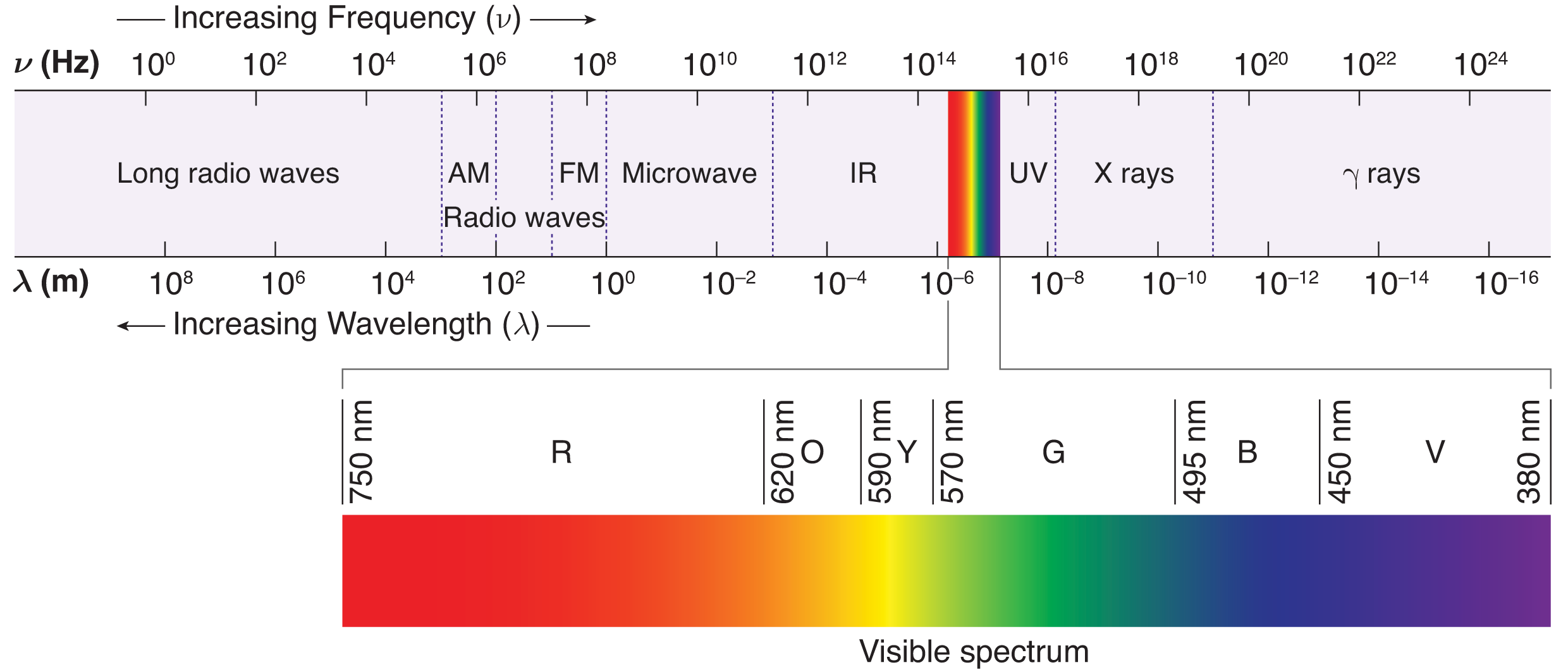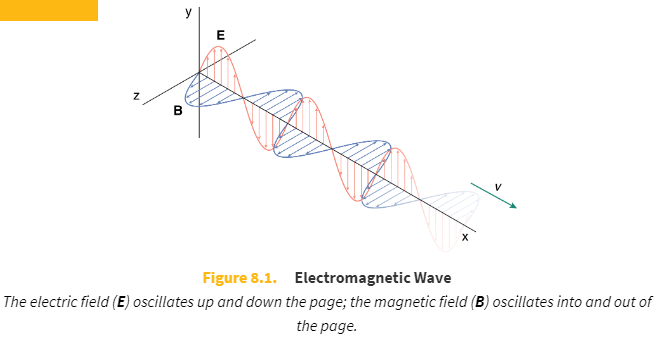Electromagnetic spectrum

The range of frequencies (the spectrum) of electromagnetic radiation and their respective wavelengths and photon energies.
List the categories of light from low energy to high energy
radio waves, microwaves, infrared, visible light, ultraviolet, x-rays, gamma rays
Electromagnetic waves are _____ waves because the oscillating electric and magnetic field vectors are _____ to the direction of propagation

transverse
perpendicular
With electric and magnetic fields, each oscillating field causes oscillations in the other field completely independent of _____. This means that electromagnetic waves can _____.
matter
travel through a vacuum
Electromagnetic waves
Classically, electromagnetic radiation consists of electromagnetic waves, which are synchronized oscillations of electric and magnetic fields.
The electric field and the magnetic field are _____ to each other.
perpendicular
Note: this is true in In homogeneous, isotropic media
Wavelength of radio waves
109–1 m
Wavelength of microwaves
1 m–1 mm
Wavelength of infrared
1 mm–700 nm
Wavelength of visible light
700–400 nm
(more accurately, about 380 to about 750 nanometers)
Wavelength of ultraviolet
400–50 nm
Wavelength of x-rays
50–10–2 nm
Wavelength of gamma rays
less than 10–2 nm
In a vacuum, all electromagnetic waves travel at the same speed, called the _____.
speed of light
Speed of light in a vacuum

To a first approximation—and for the purposes of all MCAT-related equations—electromagnetic waves travel in air at _____.

Electromagnetic wave equation
c = fλ
c is the speed of light in a vacuum and, to a first approximation, also in air
f is the frequency
λ is the wavelength
The only part of the spectrum that is perceived as light by the human eye is the _____.
visible region
Violet wavelength
~400 nm
Red wavelength
~700 nm
Light that contains all the colors in equal intensity is perceived as _____.
white
The color of an object that does not emit its own light is dependent on _____.
the color of light that it reflects
Blackbody
The term blackbody refers to an ideal absorber of all wavelengths of light, which would appear completely black if it were at a lower temperature than its surroundings.